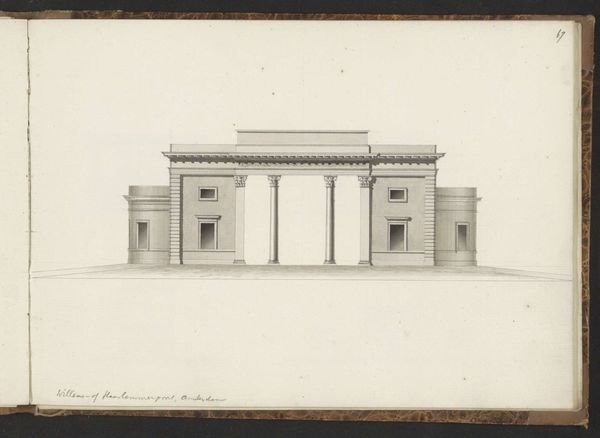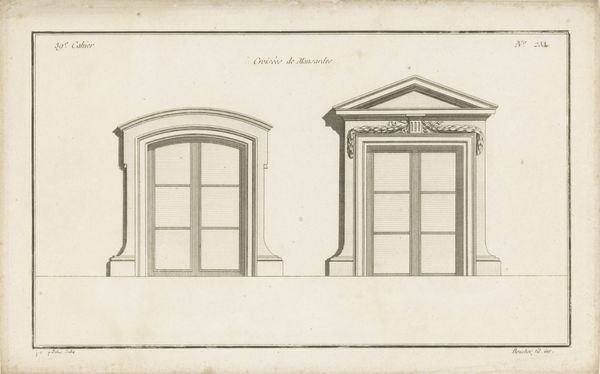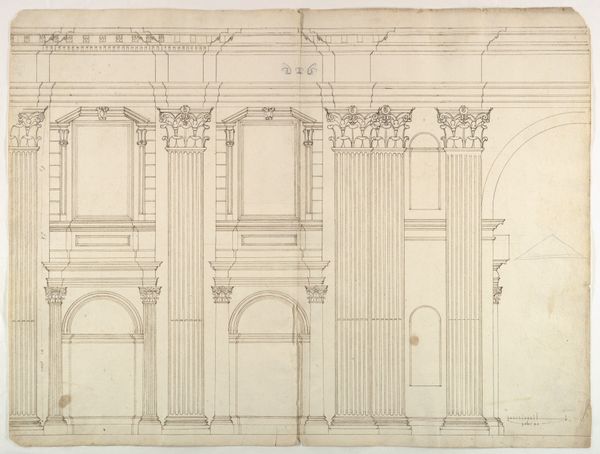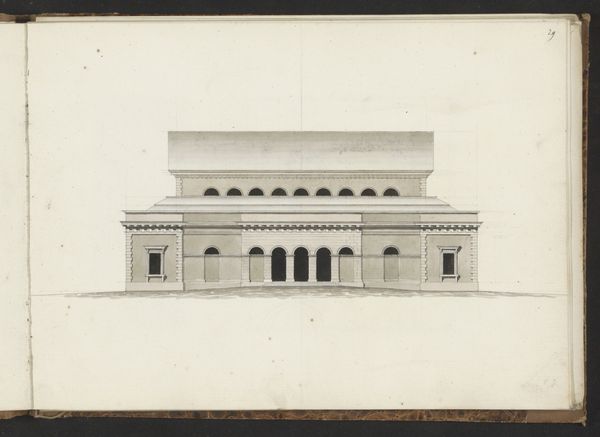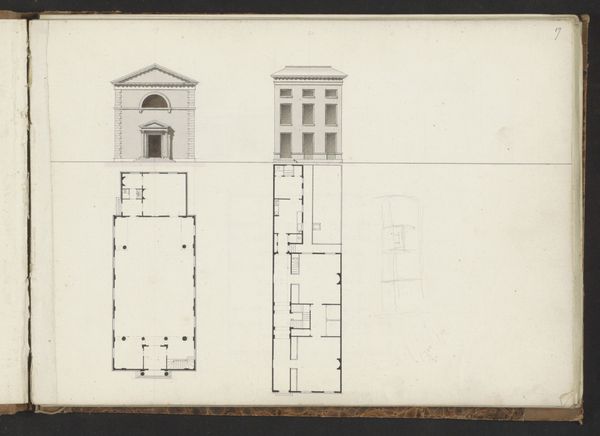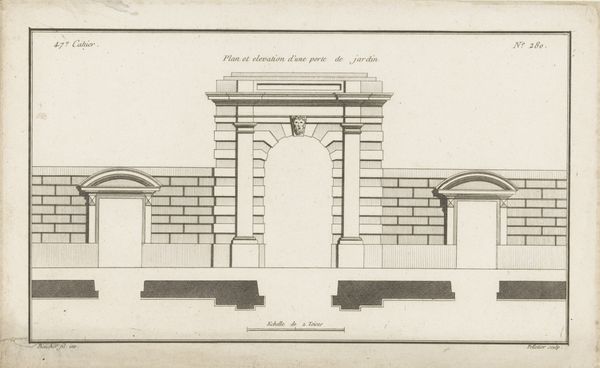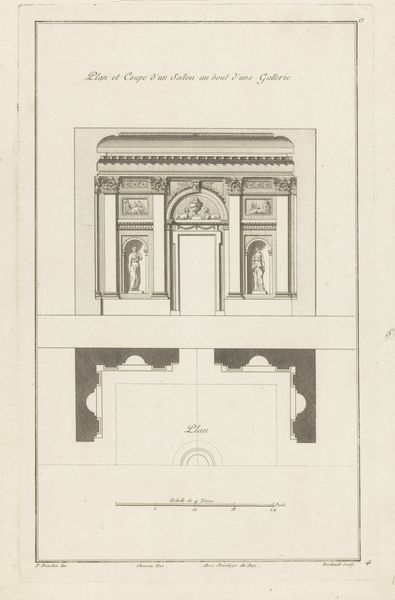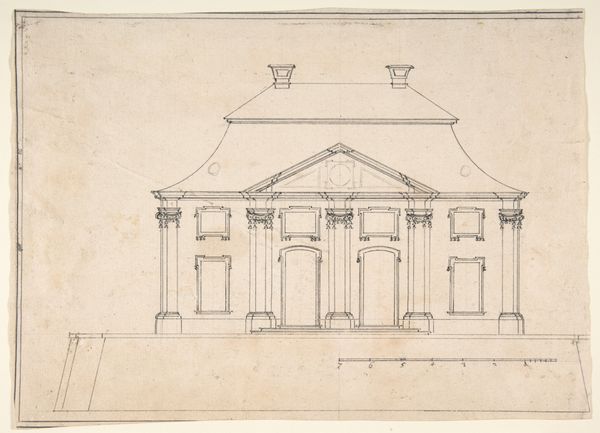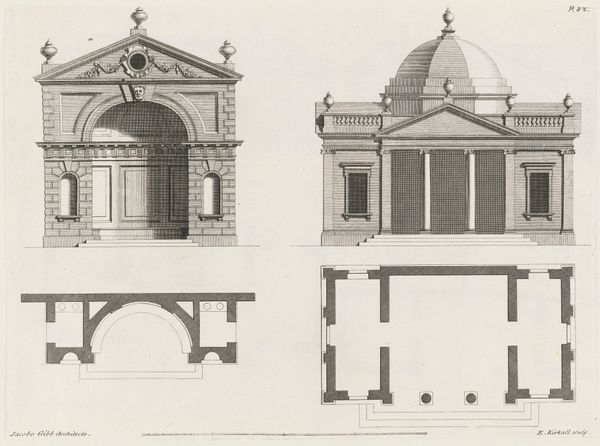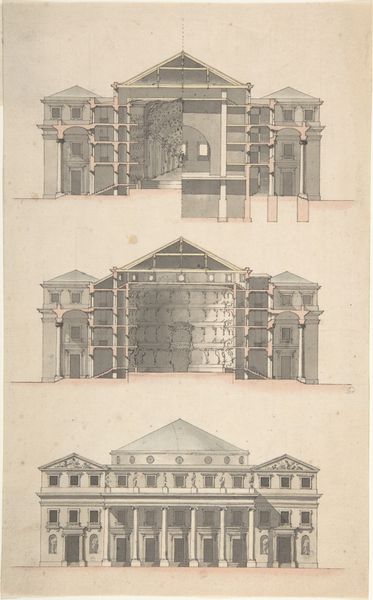
drawing, paper, pencil, architecture
#
drawing
#
landscape
#
paper
#
pencil
#
architecture
#
realism
#
building
Copyright: Rijks Museum: Open Domain
Curator: Looking at this, my first impression is a sense of almost clinical precision. It’s quite austere, isn't it? Editor: Yes, this drawing titled "Aanzichten van vier gebouwen", views of four buildings, offers us a glimpse into the architectural studies of Willem Springer Jr., created sometime between 1825 and 1907. The realism in these pencil drawings is compelling, focusing on capturing these facades. Curator: You're right, 'clinical' sells it short. There’s real craft here. Note the variation in the stone rendering across the four studies. Each conveys weight and texture using very limited means. You almost feel like you could touch the surfaces depicted. Were these preliminary sketches for larger projects, perhaps? Editor: Likely so, the level of detail suggests they served a purpose beyond mere artistic exercise. Such architectural drawings were vital for communicating design concepts, gaining approvals, and even influencing public perception of civic projects, wouldn't you say? The politics of imagery playing a key role, really showcasing that 'ideal' for building and expansion. Curator: Precisely! And in the period these drawings span, from 1825 to 1907, we see an intense focus on standardization, particularly for civil constructions. There are elements here almost like prototypes. Editor: I find myself pondering who commissioned such meticulous architectural drawings. The labor required was considerable; what was the social context that necessitated or made possible such focused work? Also how architectural presentation shifted during this era, which can be examined to inform the perception shift of Dutch urban landscapes. Curator: I hadn't considered how presentation may affect a community, that's a good point. So, leaving this piece, it is the dedication to material representation through skillful labor within historical frameworks that makes the viewing more profound. Editor: For me, it’s thinking about how these drawings played a role in the development of our environment and that the legacy that these four buildings could potentially still inhabit within our architectural design, both locally and further abroad.
Comments
No comments
Be the first to comment and join the conversation on the ultimate creative platform.
